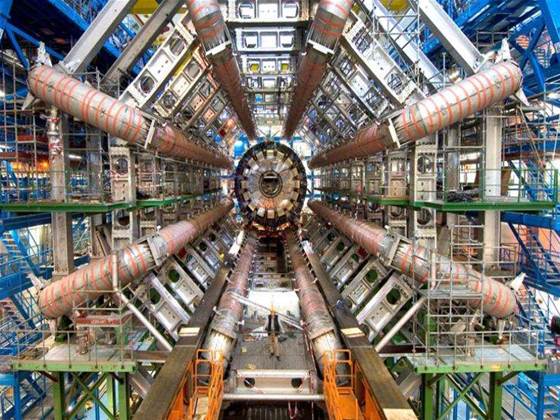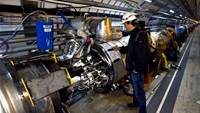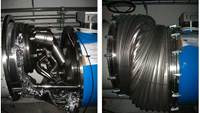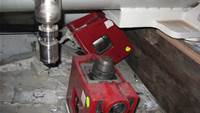CERN has indicated the Large Hadron Collider (LHC) is on track for relaunch in September “albeit about two to three weeks later than originally foreseen”.
Scientists from the European organisation for nuclear research said they were continuing to work on new systems and techniques to prevent a repeat of last year’s shutdown.
That was caused by a faulty splice in the high-current superconducting cable between two magnets.
There are some 10,000 splices around the Large Hadron Collider ring, contained in approximately 27 kilometres of tunnels under France and Switzerland.
CERN is still to test one more sector to determine whether any more splices are in need of repair.
The organisation said there were indications of at least one suspect splice in this remaining sector.
CERN is also constructing an enhanced quench protection system (QPS), which triggers evacuation of the stored magnetic energy quickly and safely should a part of the LHC’s superconducting system overheat again.
In addition, new pressure relief valves are being installed, the ultra-high vacuum system is being improved, and the systems anchoring the LHC magnets to the floor are being strengthened.
“All of this contributes to preparing the machine for a long and safe operational lifetime,” said CERN’s director for accelerators Steve Myers.
When it is back online, scientists hope, among other things, to use it to help explain the origins of mass in the universe.
Large Hadron Collider in final round of tests
Examining splices around particle accelerator ring.
Got a news tip for our journalists? Share it with us anonymously here.
Sponsored Whitepapers

Fintech compliance made fast and secure

How to evaluate SIEM solutions Safeguarding your future Get a demo Download guide

2025 Security operations insights: Three-quarters of security leaders need something new in SIEM
_(26).jpg&w=100&c=1&s=0)
Sumo Logic named in the 2025 Gartner Critical Capabilities for Security Information and Event Management (SIEM)

The cloud tipping point








.png&h=140&w=231&c=1&s=0)
_(22).jpg&h=140&w=231&c=1&s=0)

 iTnews Executive Retreat - Security Leaders Edition
iTnews Executive Retreat - Security Leaders Edition











_(1).jpg&h=140&w=231&c=1&s=0)



